Morphology instruction can greatly improve students’ vocabulary and comprehension skills. This post shares several engaging and effective morphology activities that teachers can use to help students understand and use morphemes (prefixes, suffixes, bases, and roots). These activities include lots of free activities (including a huge email exclusive freebie!) and also ready-to-go resources that you can purchase. By the end of this post, you will have a range of useful morphology activities to use in your classroom.
Terms to Know:
- Morphemes – the smallest units of meaning in language. Morphemes can be prefixes, suffixes, bases, or roots.
- Morphology – the study of morphemes
🖱️To read more about teaching morphology and morphology instruction in grades 4-5, click here.
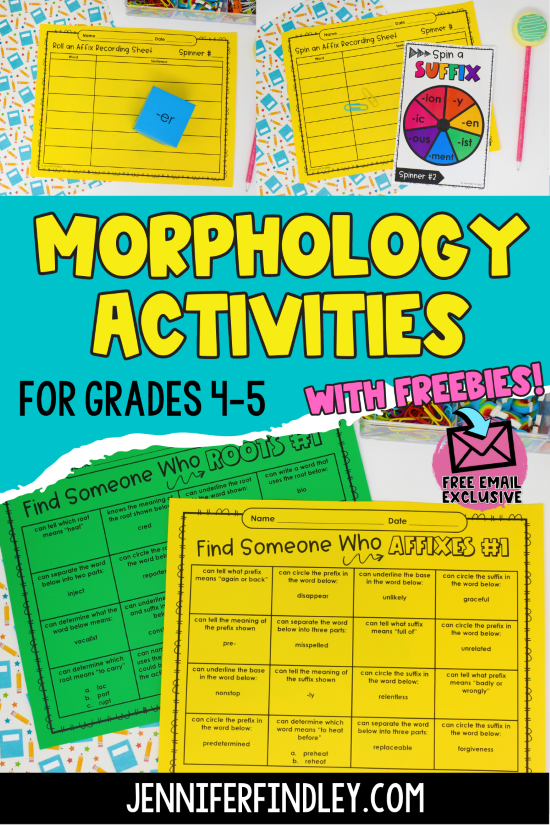
Word Building/Construction
Have students use their understanding of specific morphemes (prefixes, suffixes, or roots) to generate words containing the morpheme.
You can have students (working independently or in pairs) generate a list of words that contain a particular morpheme. This can even be turned into a game where points are rewarded for each correct word or unique word generated.
This word building activity can easily be made more engaging and hands-on by using a spinner with affixes or a cube for students to roll.
Morphology Word Chains
Morphology word chains are an engaging morphology activity designed to help students develop a deeper understanding of word formation and structure by guiding them through steps to create a series of words. Beginning with a base word, students follow a series of steps to add, remove, or modify affixes (prefixes and suffixes) or the base word itself. As a result, a chain of interconnected words is formed, with each word linked or connected to the ones before and after.
Morphology Word of the Day
Having a morphology word routine is another great morphology activity. Present a multimorphemic word (a word with multiple morphemes – such as a prefix, a suffix, or both) to students to analyze. Have the students deconstruct the word into its morphemes and identify the meaning of each. Then they can use those meanings to uncover the meaning of the word. Giving a sentence context will also help students derive an accurate meaning.
🖱️Click here to read more about this activity and grab FREE Morphology Word of the Day templates.
Unscramble Morphemes Activity
Present morphemes that are out of order but can be combined to form words. Read and discuss the meaning of each morpheme. Then have students work independently or with others to unscramble the morphemes and determine the word.
Pro Tip: Present a sentence with a blank for the unscrambled word so students can use context to check their work.
🖱️Click here to see these Unscramble the Morphemes Task Cards on TpT.
Morphology Word Sorts
Word sorts are another effective and engaging activity. Give students a list of words and have them sort the words into categories based on a morphological aspect of the word. The sorts can be closed (given the categories by the teacher) or open (students generate the category).
Here are some example sort ideas that focus on the morphology of words:
- Sort words with a common affix. Identify the affix.
- Sort bases by which prefix could be added to it.
- Sort words by what morphemes they include: prefixes, suffixes, or both.
- Sort words by part of speech (focusing on how the suffix changed the part of speech)
- Sort words by spelling change to the base when a suffix was added.
- Sort words by which assimilation or chameleon prefix would complete them. (in-, im-, ir, and il-)
- Sort words with a common root. Identify the root.
You can write the words on index cards for students to sort or purchase ready-made sorts.
🖱️Click here to see Morphology Sorts for Grades 4-5 that are ready-to-go and include 60 sorts.
Morphology Search – Environmental Print
Multimorphemic words (words with affixes or even compound words) are all over the place. Take advantage of this with a morphology search activity!
Collect packaging (cereal boxes, snacks, etc) or magazines to bring in. Have students read the text and search for multimorphemic words. They can list the words and code the morphemes (underline the affixes and box the root) or write word sums that break up the words into their separate morphemes.
As an extension activity, you could even have the students create their own packaging descriptions using multimorphemic words.
🖱️The printables for this activity can be downloaded for free by clicking here and signing up for the “Email Exclusive FREE Morphology Activities.”
Collaborative Activities to Review Prefixes, Suffixes, and Roots
Anytime we can add in collaborative activities is a win. Here are a couple of ideas for collaborative morphology activities:
Around the Room Activity – Place morphology tasks or questions around the room. Have students go around the room to complete the task. They can work with partners or small groups.
Find Someone Who Activities: Students will work with other students in their class to find the answers to morphology review tasks.
Morphology Writing Activities
Not only do we want our students identifying and reading words with specific morphemes, but we also want them to write words that use those morphemes in the context of sentences and stories. Morphology writing can be added to any morphology activity or lesson. Here are some examples of how you can add this into any morphology activities:
- After students build words using specific morphemes, they can then choose some to write in sentences.
- After sorting a set of words based on morphological word parts, they can choose one or two to write in sentences.
- After completing word matrixes (more about these in the next section), have students use each word in a sentence verbally or in writing.
Morphology Word Matrixes
Morphology word matrixes are a great way to have students build words with a common base or root. A morphology word matrix displays morphemes in an organized visual. Students use the word matrix to create known words and new words that use a common base or root and the affixes shown on the matrix.
This activity can be used to reinforce knowledge of prefixes, suffixes, and roots as well as to practice spelling conventions when adding suffixes to words.
Morphology Work Mat Activity
This free morphology word work mat is an activity that incorporates reviewing morphemes, writing words with morphemes, and using those words in sentences.
For this morphology activity, students will choose a morpheme card and place it or write it in the middle of the mat. Students will then create four tasks with that morpheme:
- Determine what type of morpheme it is (prefix, suffix, or root).
- Write the meaning of the morpheme.
- Use the morpheme in a word.
- Use the word with the specific morpheme in a sentence.
Morphology Word Wall + Activities
A morphology wall is a collection of prefixes, suffixes, bases, and roots displayed and referenced to help students learn about the power of morphology and the structure of words (and how they relate). A morphology wall can be used as references by students but it also a powerful instructional tool. You can use the morphology wall on a regular basis to review the meaning of morphemes and have students create and generate words.
Want MORE Morphology Activities?
Morphology instruction is so powerful for building vocabulary and comprehension. Having activities and resources on-hand to implement into your instruction is key. Click here on the image shown to see a bundle of my favorite morphology activities.
The bundle includes the following ready-to-go morphology activities:
Morphology Word Chains
Morphology Word of the Day Practice
Morphology Word Matrix Activities
Morphology Word Sorts
Unscramble the Morpheme Task Cards
Morphology Quick Reads: Prefix, Suffix, and Roots
Morphology Writing Prompts: Prefixes and Suffixes
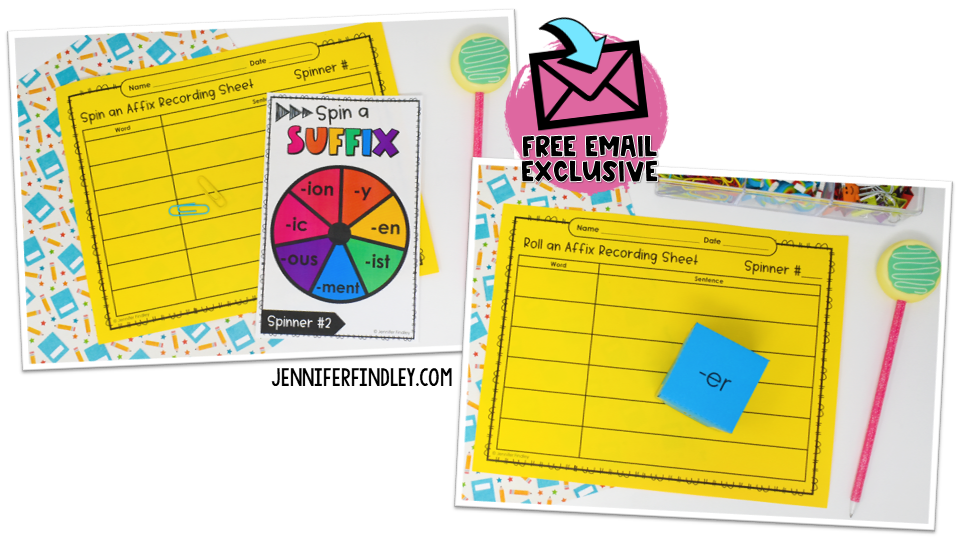
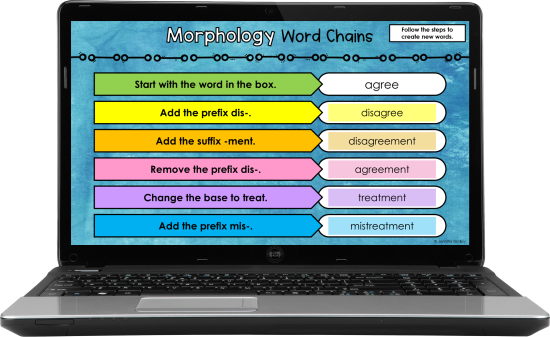

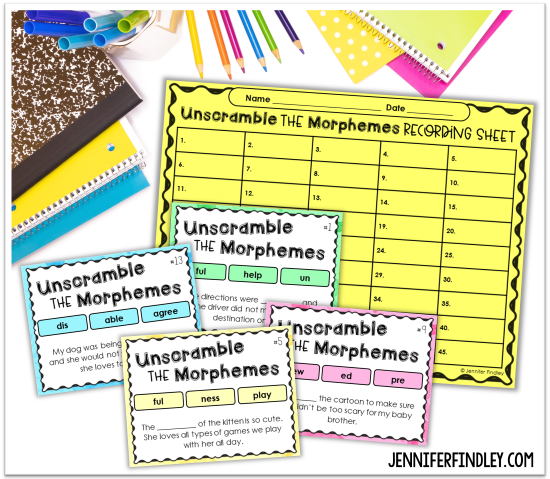
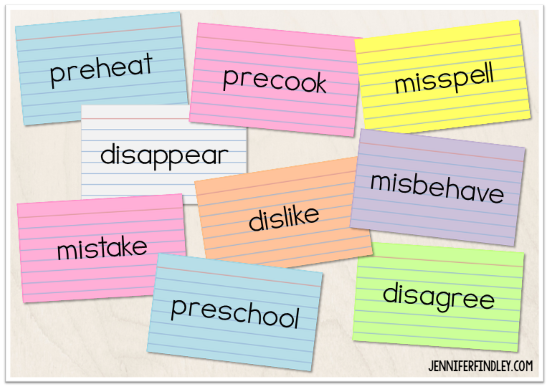

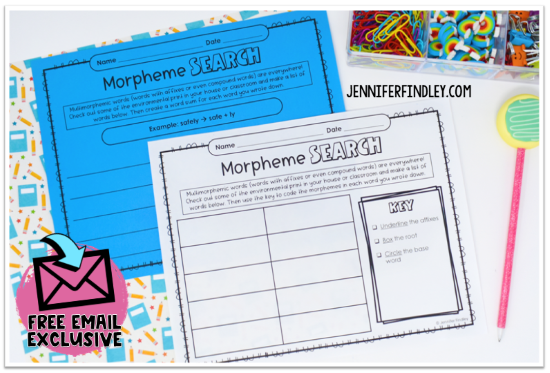
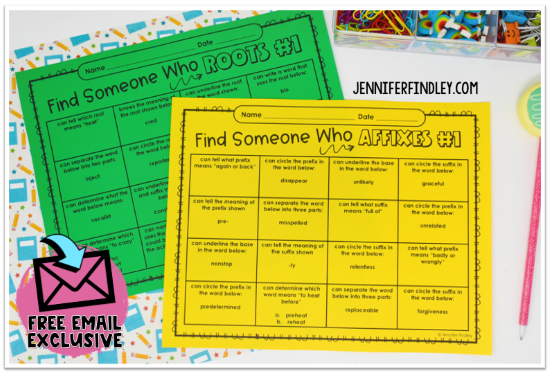
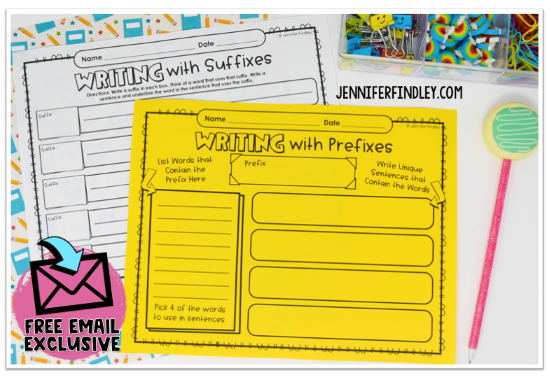

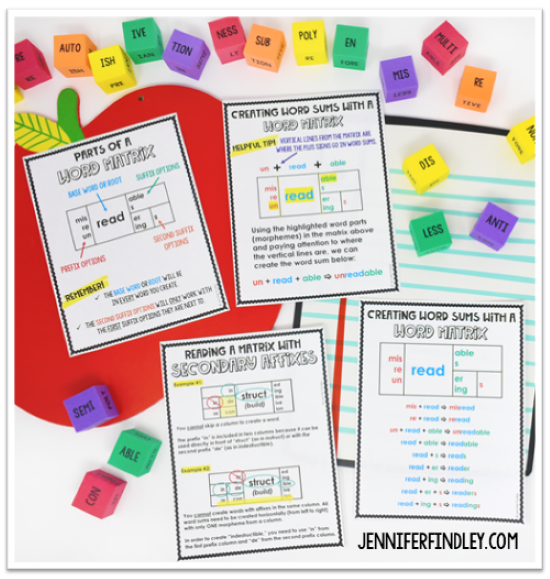
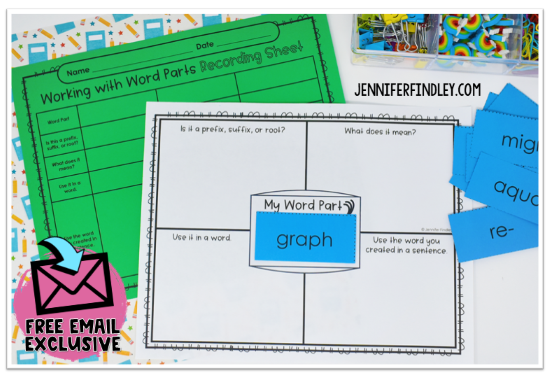
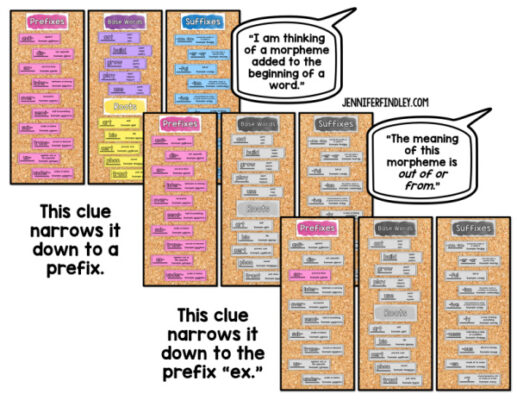








This looks amazing!!
Hello Jennifer,
I was wondering where you purchased the root, suffixes and prefixes dice from that are pictured above with your Morphology Word Matrixes resource?
Thank you kindly.
Hi Crystal, we made those. 🙂 I wish we could find some for purchase.